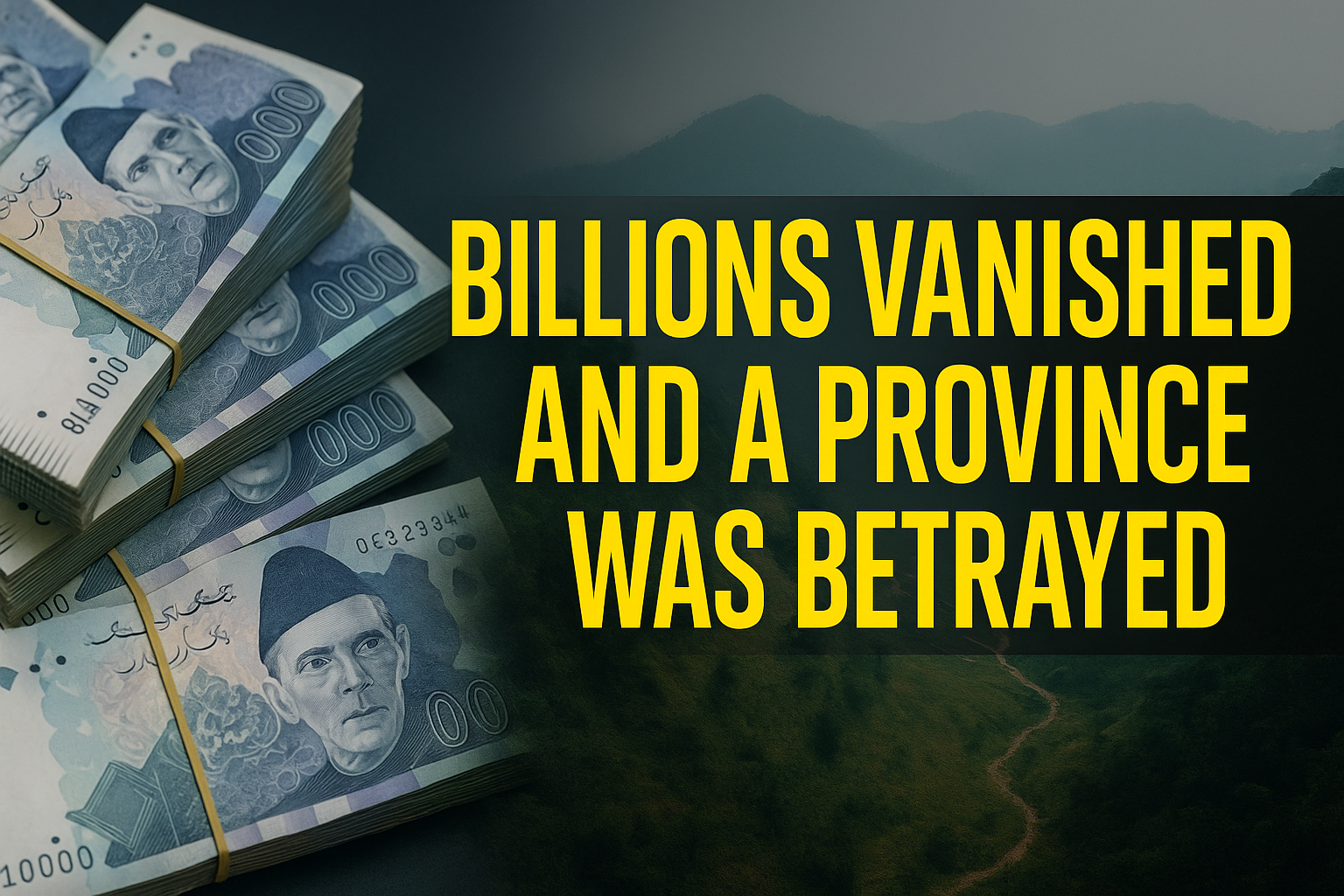The Kohistan Mega Scam: How Billions Vanished and a Province Was Betrayed
In early 2025 the Pakistani province of Khyber Pakhtunkhwa was shaken by the news of an incredible corruption scheme that involved billions of rupees. Government officials had diverted government money into dummy companies and phantom accounts in connection with phony development schemes in the remote mountainous region of Upper Kohistan. Upon the opening of the financial books investigators found out that close to 40 billion rupees had been misappropriated some of which had also ended up in bank account of a dumper driver.
Common taxpayers, rural populations, and local media were appalled by the sheer magnitude of the theft that was a betrayal of the trust of the people on an inconceivable level. This mega scam went down to be the biggest corruption scandal in the history of the province and put officials on high alert to avert a crisis mode.
How the Money Trail Led to High Power?
The case was first uncovered when auditors discovered a suspicious transaction in an account belonging to a provincial chain of business called “Security and Deposit Works”. The outflows were much more than the reported costs of development. This was followed by hearings of the Public Accounts Committee. They uncovered forged cheques, fabricated invoices of roadwork that did not take place and scores of luxury cars, foreign bank accounts and properties that could be traced to high ranking officials and businessmen.
People detained were executives of state-owned companies, various contractors, and even a well-known businessman whose home address was once associated with luxurious villas. As names of suspects were announced and arrested, journalists put together the extent to which financial fraud had been made to look like a grand deception to cover up an institutional malfunction that left billion of money handling easy access to those with no check on them.
Public Outrage and the Search for Justice
The news enraged people in the province as residents of the Upper Kohistan and other regions heard how the money that was to go to schools, roads and basic infrastructure simply disappeared. There were protests, with people marching and demanding resignations and accountability. Citizens brought claims in court and consumer boycotts were spread online of state-run fuel stations, which were regarded as emperors of corruption. Academics within the University publicly spoke against the deficiencies of transparency and reforms. The scandal was not just a financial one it was a symbol of the failure of governance that harmed the poor and those who could not speak out. In the meantime, the National Accountability Bureau managed to recover billions of assets, but many of the victims insisted on their complete recovery and prosecution of all the officials involved.

Inside the Investigation
The investigators showed that anomalies were identified in preliminary audits as early as 2023 but according to internal critics, that information was suppressed over the years. By the time NAB acted, it discovered over a thousand forged cheque and many shell companies. There was an effort by some officials to wipe out digital breadcrumbs. Raids by police netted sums of money worth hundreds of millions of rupees, piles of gold, foreign currency and luxurious vehicles.
The case brought up an instant demand regarding the ease with which money in the public coffers was hidden under the guise of regular-looking developmental budgets and how the chances of control had been lost through holes in the years. Forensic accounting and the pressure of politics had to do the trick to unlock the mystery, and even today some claim that the complete truth is still unknown.
Why It Became a National Crisis?
This scandal went viral since it consisted of elite corruption, betrayal of the people, and stealing on a mass scale in a region already in need of development. Millions were shocked by the amount of money that was missing. The defendants were senior officials in the finance office of the province and the political cabinet. On social media platforms, discussions were conducted with the use of hashtags demanding transparency, family members of victims posted appeals on reforms. The rhetoric of talk of remote villages getting water and roads that never materialised resonated with strong emotions, anger against injustice and hope of a new dawn. It was not only news It turned out to be a milestone in the way Pakistan deals with ingrained corruption.
Conclusion
In addition to lost billions, the scandal caused people real pain. Schools were unfinished, health clinics never opened and roads turned into muddy tracks. In the case of the people living in the upper Kohistan, it was just written down development plans that could not be fulfilled. The scandal also damaged the morale of the region-families were no longer confident in government programs, and local leaders were disgraced, and whole communities felt deserted. With asset recovery, the task of rebuilding trust is more than a financial one. It entails responsibility, change of institutions, and a regime that can avert such crimes in future.
Share this content:




Post Comment